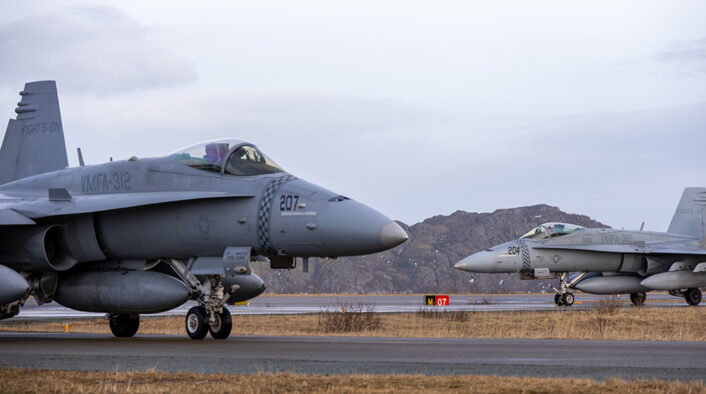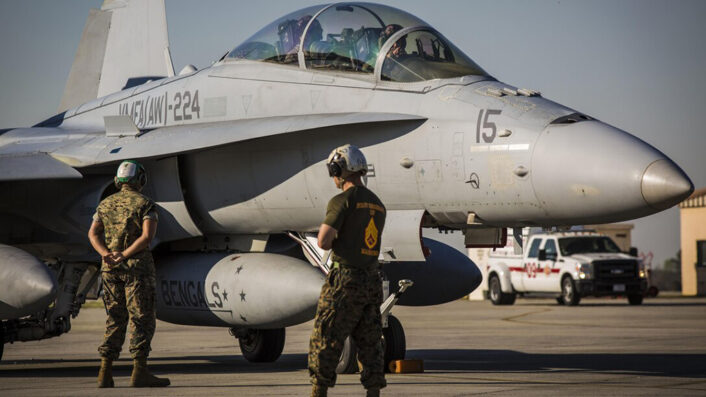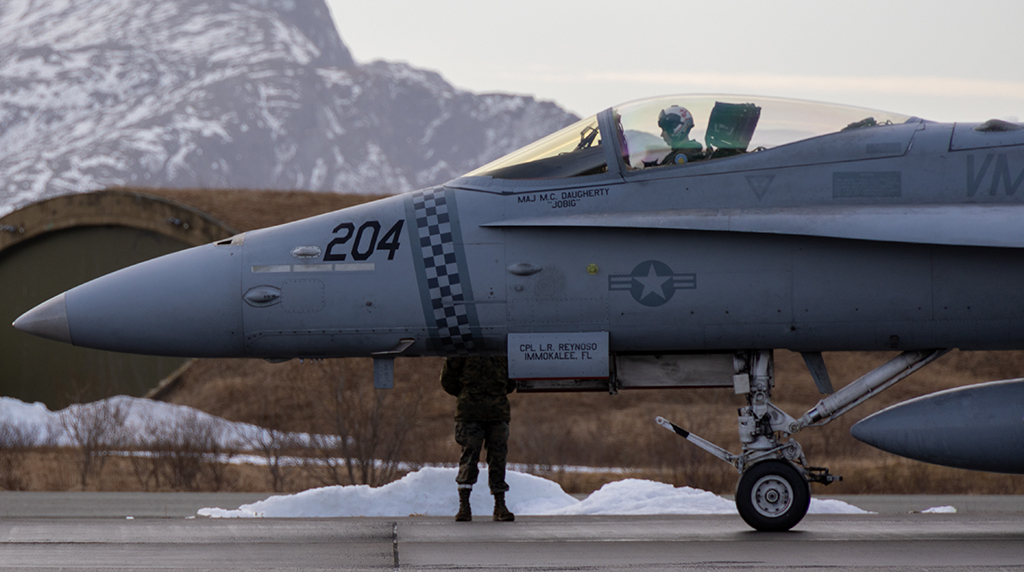U.S. repositions 200 Marines from Norway to Lithuania and moves Hornets to Eastern Europe.
The build up on NATO’s Eastern Flank continues. Yesterday we reported about the arrival at Spangdahlem Air Base, Germany, of an expeditionary force made of six EA-18G Growler Electronic Attack aircraft, belonging to the Electronic Attack Squadron (VAQ) 134 “Garudas”, from Naval Air Station (NAS) Whidbey Island, Washington. As explained, the Growlers bring to the theatre a valuable Electronic Warfare capability, particularly useful in this period to update the Electronic Order of Battle of all the Russian assets operating in the region.
Other U.S. and NATO assets have been deployed in Romania, Bulgaria, Poland and the Baltic States before and after the Russian invasion of Ukraine. And probably, more may join in the next few days.
During the Press Briefing on Mar. 29, Pentagon Press Secretary John F. Kirby said Washington is moving or repositioning additional forces to the region as part of the U.S. response to the current crisis.
“[…] as a matter of fact, I can let you know that you’ve all been tracking a Marine Corps exercise Cold Response up in Norway. So, I can tell you that a command-and-control unit from Marine Air Control Group 28, which is based at Cherry Point, has now been repositioned to Lithuania. That’s about 200 people,” he said.
“So, they finished the exercise. They’re in Lithuania now. And about 10 Marine Corps F-18 hornets from Beaufort, South Carolina and a couple of Marine Corps C-130s are now going to be repositioned to Eastern Europe. I don’t have an exact destination right now. But they’re going to be repositioned and that’s another 200 personnel. So, I mean, we’re trying to stay flexible here.”

In other words, instead of returning to their homebases, some of the forces taking part in Cold Response, remain forward deployed to Lithuania. Interestingly, the Hornets are heading to an undisclosed base in Eastern Europe. The latter are the 10x F/A-18C/D Hornets belonging to VMFA-312, VMFA-115 and VMFA(AW)-224 deployed to Bodo, Norway, for the drills. The aircraft arrived in Norway between Feb. 28 and Mar. 2, 2022.
As the F-35B (and C) continue to gradually replace the EA-6B, AV-8B and F/A-18C/D in Marines units, MAG-31 at MCAS Beaufort, South Carolina, has four squadrons still equipped with the “Legacy Hornet” aircraft: VMFA-115, VMFA(AW)-224, VMFA-312 and VMFA(AW)-533. These are composite squadrons, equipped with both single and two-seat Hornets (as proved by VMFA-312, deploying to Bodo with five F/A-18Cs and a single F/A-18D).
Overall, the Marines have selected 84 Hornets to be upgraded so that they can reach up to 10,000 flight hours (from the initial 6,000 FH the aircraft were designed for) and remain in service until 2030. These aircraft can still perform pretty well in many missions, including the CAS (Close Air Support) role for the Marines operating on the ground, thanks to a bunch of avionics and electronic warfare enhancements that include a new RWR (Radar Warning Receiver), a self-protection jammer, an AESA (Active Electronically Scanned Array) radar as well as new weapons, such as the AIM-120D, the AIM-9X and the APKWS (Advanced Precision Kill Weapon System).

BTW, along with the 10 Hornets moving to Eastern Europe, Cold Response saw the participation of other U.S. Marine Corps assets, including at least 7x MV-22Bs with VMM-261 (one of those was lost in a crash killing four military on board); 10x AV-8B+ Harrier II aircraft from VMA-223; 4x UH-1Y and 2x AH-1Z helicopters of the HMLA-269 and 5x CH-53Es with HMM-366.













